Meditech News
January 2023
Meditech UK chooses CloudWave’s OpSus Cloud Services to deploy its cloud-based Meditech Expanse implementation at two NHS trusts. (1/13/23)
December 2022
A KLAS report on practice management systems for mid-sized and large practices finds Athenahealth and Epic topping the list for large practices — although Meditech Expanse was right on their heels but with an insufficient sample size – while Cerner and EClinicalWorks need improvement. Mid-sized practices are most satisfied with Athenahealth and NextGen Healthcare, while independent practices like NextGen Healthcare. Two-thirds of Oracle Cerner customers report dissatisfaction due to outdated technology, inadequate training, and functionality gaps that require adding third-party products, with many of those having low expectations for the company’s RevElate replacement product because of Cerner’s history of unfulfilled RCM promises. (12/21/23)
Meditech confirms that founder and board chair A. Neil Pappalardo has retired from the company that he started 54 years ago. (12/12/22)
Mater Private Network in Ireland begins its Meditech Expanse implementation. (12/7/22)
Russell Medical Center AL) converts from Meditech Magic to Meditech as a Service with help from CareCloud’s MedSR division. (12/7/22)
November 2022
Floyd County Medical Center (IA) goes live on Meditech Expanse. (11/16/22)
Andrew Burchett, DO (Avera) joins Meditech as executive director of medical informatics. (11/14/22)
Warren General Hospital (PA) will replace its legacy Meditech system and three ambulatory EHRs with Meditech Expanse. (11/11/22)
Thirty-year Meditech customer HCA Healthcare will upgrade its hospitals to Meditech Expanse as its go-forward EHR. (11/9/22)
Nine organizations licensed the cloud-based model of Meditech Expanse in the third quarter, raising the count of Meditech as a Service hospitals to 70. Five of the nine were new to Meditech. (11/4/22)
Meditech will use Health Gorilla’s Health Interoperability Platform for the Traverse Exchange Canada network for sharing data among participating providers. (11/2/22)
Meditech announces Traverse Exchange Canada, a cloud-based interoperability network that supports information flow among participating organizations. (11/2/22)
October 2022
A review finds that Canada’s Newfoundland and Labrador Centre for Health Information was warned that its 40-year-old Meditech Magic system was vulnerable to hackers a year before a fall 2021 ransomware attack exposed patient information and caused treatment delays. NLCHI has been recommending for years that the province issue a tender to replace Magic, with one study projecting that a move to Meditech Expanse would cost $85 million over 10 years, but would more than pay for itself. (10/31/22)
Meditech launches Expanse Population Insight, which uses claims and EHR data from the Innovaccer Data Platform to provide information about risk, care gaps, and utilization at the point of care. (10/21/22)
Campbell County Health (WY) kicks off its year-long, $8 million project to replace Meditech with Epic in an affiliation with UCHealth. An HIStalk search finds several references to the health system – it sent employee W-2s to a hacker who impersonated a hospital executive in 2017, lost $200,000 in Medicaid payments due to billing system failures in its acquisition of a private surgery center in 2018, and went on diversion due to a ransomware attack in 2019. (10/14/22)
Harnett Health (NC) switches from Meditech to Epic as part of its affiliation with Cape Fear Valley Health. (10/5/22)
Box Butte General Hospital (NE) postpones its roll out of Meditech Expanse as it takes into account lessons learned from a mock live event held in late September. (10/10/22)
Meditech adds patient transport workflows, including an app for transport staff, to its Expanse EHR. (10/3/22)
September 2022
Mater Private Network will implement Meditech Expanse across its nine facilities in Ireland by 2024. (9/28/22)
Houlton Regional Hospital (ME) will go live on Meditech Expanse on October 1. (9/14/22)
August 2022
Southern Ohio Medical Center reports a 30% reduction in hospital-acquired C. difficile infections following work with Meditech Professional Services and implementation of Expanse tools. (8/31/22)
Warren General Hospital will implement Meditech Expanse in a $2.3 million project. (8/19/22)
British Columbia’s Fraser Health Authority chooses Picis Preop Manager, Anesthesia Manager, and PACU Manager for 11 acute care hospitals, integrated with Meditech as the health system replaces Client / Server with Expanse in an agreement signed in April 2022. (8/19/22)
Gaylord Specialty Healthcare (CT) selects Meditech Expanse. (8/3/22)
July 2022
Meditech announces Meditech Live, a customer leadership conference that will be held in Foxborough, MA September 20-22. (7/15/22)
In England, two Cheshire NHS trusts will collaborate to replace their paper-based systems with Meditech Expanse. (7/8/22)
In The Bahamas, Doctors Hospital Health System chooses CloudWave to host its new Meditech Expanse EHR on OpSus Healthcare Cloud. (7/8/22)
A new KLAS report on EHRs for practices of 11 or more clinicians finds that Epic and Meditech lead the the pack in finishing a close 1-2. Ease of use and workflow is by far the most pressing concern of practices of that size. Cerner users are frustrated with outpatient workflows and the company’s focus on resolving inpatient problems, while Greenway Health’s customers are an outlier in putting functionality improvements at the top of their list of needs. Allscripts has two of the three bottom-rated products, along with poor ratings for support, relationships, and overselling product capabilities. (7/6/22)
June 2022
Pawnee Valley Community Hospital (KS) transitions its family medicine clinic to Meditech. (6/1/22)
May 2022
Garrett Regional Medical Center (MD) will use $650,000 in federal funding to replace its 20-year-old Meditech EHR with Epic. (5/25/22)
April 2022
KLAS summarizes US hospital EHR market share activity for 2021 (click the graphic to enlarge):
- Epic gained four new customers representing 28 hospitals and 13,000 beds last year, losing four due to M&A.
- Meditech Expanse was chosen by 74% of the company’s legacy customers that made a replacement decision in 2021, compared to 38% retention in 2020.
- Epic has 33% of hospitals and 44% of beds versus Cerner’s 24% and 27%, respectively.
- Allscripts and CPSI lost ground in 2021.
- Cerner had the largest net decrease in bed count last year, with half of those hospitals choosing Epic as a replacement and the other half switching to Epic after being acquired.
- Cerner hasn’t had a net-new large health system sale since 2013. (4/27/22)
Canada’s Newfoundland and Labrador — which is running a 1980s-era Meditech Magic system that is no longer enhanced — hasn’t followed through on recommendations that it upgrade to a new version of Meditech in a $92 million project that auditors say would more than pay for itself. (4/25/22)
Golden Valley Memorial Healthcare (MO) goes live as the first site running Meditech Expanse Genomics. (4/22/22)
Fraser Health will upgrade its Meditech Client/Server system to Expanse. (4/15/22)
March 2022
Newman Regional Health (KS) will connect its Meditech Expanse EHR to nearby Coffey Health System. (3/18/22)
Meditech will pilot the FHIR-enabled integration of Google’s search and summarization capabilities within its Expanse EHR. (3/16/22)
Floyd County Medical Center (IA) hires Cristina Thomas, MBA (The HCI Group) as interim CIO. The hospital is preparing to implement Meditech Expanse in the fall. (3/2/22)
Meditech makes Expanse Ambulatory available to independent and physician-owned practices. (3/2/22)
February 2022
Meditech adds COO to the title of 32-year company veteran EVP Helen Waters. The COO role was previously held by President and CEO Michelle O’Connor before her promotion in early 2021. (2/25/22)
In Australia, cancer center Chris O’Brien Lifehouse goes live on Meditech Expanse. (2/9/22)
Highlights from the just-announced Best in KLAS awards:
- Epic, Nordic, Galen Healthcare, and The Chartis Group were named as overall best.
- Epic won Best in KLAS awards in 11 market segments.
- Most-improved products include Infor ERP and Greenway Intergy Practice Management.
- Epic was the top-rated physician practice vendor by far, followed by Athenahealth, NextGen Healthcare, Greenway Health Intergy, Allscripts, and EClinicalWorks.
- Topping the overall software suite rankings was Epic, followed by Meditech Expanse, Cerner, CPSI Evident Thrive, and Allscripts.
- Nordic led overall IT services firms, followed by Pivot Point Consulting, Bluetree Network, Experis Health, Impact Advisors, Engage, and Cerner. (2/9/22)
January 2022
Meditech will integrate SecureLink’s critical vendor access management software with its systems. (1/12/22)
December 2021
The Massachusetts Supreme Court rules in favor of a former Meditech employee who claims he was fired for exercising his right to file a rebuttal in his personnel file. Terence Meehan says Meditech reorganized its 12-person regional sales department in demoting three sales reps – including Meehan – to the newly created position of “sales specialists,” who sales reps rarely used because they don’t want to share commissions. Meehan says he and the other demoted employees were placed on performance improvement plans in July 2018, and when he sent his supervisor a rebuttal, the president and CEO of Meditech immediately terminated him. He filed a complaint of wrongful discharge and the court agreed with him. (12/20/21)
Sage Memorial Hospital goes live on Meditech-as-a-Service with the assistance of Healthcare Triangle. (12/17/21)
HCA Healthcare will go live on Meditech Expanse at three hospitals in New Hampshire by the end of 2022, with the assistance of CereCore. (12/8/21)
November 2021
Health officials in the Canadian province of Newfoundland and Labrador say health IT systems, including its Meditech EHR, are slowly being brought back online after last week’s cyberattack. (11/10/21)
October 2021
A new KLAS report looks at Meditech implementation services. Tegria-owned Engage scores highest although all validated engagements involved under-100 bed hospitals, while Tegria-owned Navin Haffty, Huron, and MedSR (the merged MedMatica and Santa Rosa Staffing) scored high in broader settings. Meditech’s recently launched implementation services also score above average. (10/29/21)
September 2021
Unity Health (AR) will implement Meditech Expanse across its three hospitals and long-term acute care facility. (9/29/21)
Mile Bluff Medical Center (WI) will convert from NextGen to Meditech Expanse on October 1. (9/29/21)
Meditech will hold its Physician and CIO Forum September 29-30 as both an in-person and virtual event. (9/24/21)
Long-time Meditech executive Roberta Grigg, who retired in 2001, died last month at 79. (9/10/21)
July 2021
A Georgia law firm files an ONC information blocking complaint against Doctors Hospital of Augusta, Meditech, and Ciox Health, claiming that the patient records the firm requested on behalf of its malpractice client were not provided as an OCR-readable PDF file. (7/23/21)
Meditech officially confirms the months-ago promotion of President and COO Michelle O’Connor to president and CEO. She replaces Howard Messing, who remains on the company’s board. (7/14/21)
June 2021
California launches its digital COVID-19 vaccination record system, built on the open source SMART Health Card Framework of VCI, whose members include Cerner, Epic, Meditech, Allscripts, HIMSS, and The Sequoia Project. (6/21/21)
Major Health Partners (IN) goes live with Meditech Expanse Patient Care as an early adopter. (6/18/21)
Meditech announces its upcoming integration with IOS 15’s enhancements to Apple Health, in which providers can launch a web-based dashboard within Expanse to view the information that a patient has shared with them. (6/11/21)
KLAS distills its information on each of the four major health system EHR vendors into individual “Complete Look” reports, which conclude:
- Allscripts — C- in product, C- in loyalty, 18% of customers report deep interoperability as adoption of DbMotion wanes. Sunrise has 4% of US hospital beds. Sunrise is an integrated, highly customizable platform, but Sunrise Ambulatory Care and Sunrise Financial Manager are not widely used. For transformational technology, significant interface maintenance is required since each system has its own database.
- Cerner — C in product, C+ in loyalty, 28% of customers report deep interoperability as customers benefit from its CommonWell connection. Millennium has 25% of US hospital beds. Cerner offers a broad Millennium suite that reduces third-party integration and is proven in both large and small organizations, but patient accounting is a weakness and the company’s less-prescriptive implementations lead to variability in customer success.
- Epic — B+ in product, A in loyalty, 63% of customers report deep interoperability with Care Everywhere and its connection to Carequality. Epic has 42% of US hospital beds. The company’s fully integrated suite has topped all software suites for 11 years running, is proven in big health systems, and offers a widely used patient portal and population health management solution, although it has a high upfront cost and some modules require in-house expertise to build.
- Meditech — B+ in product, A- in loyalty, 10% of customers report deep interoperability as most customers use point-to-point interfaces or HIEs, although its CommonWell connection is used by some early adopters. Expanse has 4% of US hospital beds. Meditech offers consistent development on Expanse, integrated offerings, and affordability that has made it the leading product for community hospitals, but Expanse costs more than the company’s legacy solutions and larger health systems have been historically hesitant to choose it. (6/9/21)
A new KLAS report on patient privacy monitoring finds that Maize Analytics and Protenus are the standouts, offering strong service and deploying AI-powered monitoring that reduces manual work. Managed privacy services customers of Imprivata’s recently acquired FairWarning report high satisfaction, although non-MPS users of the product are less optimistic about its functionality and development path. Cerner customers often use its low-satisfaction P2 Sentinel but have Imprivata, Maize, and Protenus as alternatives; Epic sites fare best with Maize and Protenus; and Harris-owned Iatric Systems performs best for Meditech sites. (6/4/21)
May 2021
A new KLAS report on EHR market share in US hospitals finds that Epic gained the most in 2020, adding 101 hospitals representing 19,000 beds. Cerner saw its second consecutive year of net market decrease in losing 19 hospitals and 10,000 beds, which KLAS attributes to big-hospital concerns about its revenue cycle functionality. Epic’s market share is 31% of all hospitals and 42% of all beds, while Cerner has 25% and 27%, respectively. All the hospitals that Meditech added in 2020 were under 100 beds and 62% of its legacy customers that made EHR decisions in 2020 moved to other vendors, Epic in almost all cases. (5/21/21)
Six hospitals in Ottawa, Canada develop a version of Meditech’s patient portal for French speakers. (5/21/21)
Nexus Health Systems (TX), Grady Memorial Hospital (OK), and Duncan Regional Hospital (OK) select cloud hosting services for Meditech from Tegria companies Navin Haffty and Engage. (5/5/21)
A new KLAS report finds that non-US EHR activity was strong in 2020, with 135 net new deals and 23 migrations, although 30% less than in 2019. The biggest winners were Epic, Dedalus, InterSystems, and Cerner. Epic’s market share in Canada has grown from three hospitals in 2016 to 146 now, but migration to Meditech Expanse is becoming more common. (5/5/21)
April 2021
CHIME, which recently ended its participation in the HIMSS conference, partners with the HLTH conference to offer Vive, an annual “reimagined health technology event” whose first conference will be held March 6-9, 2022 in Miami Beach. It will offer digital health innovation content, CHIME’s Spring Forum, an exhibit hall, and a matchmaking program that pairs potential buyer attendees with vendors. Some of the 18 title sponsors are also exhibiting at HIMSS21, but notable companies that will be only at Vive, at least according to HIMSS21’s exhibitor list so far, include Allscripts, Cerner, and Meditech. In an interesting adjacency of time and space, Vive will convene eight days before and 230 miles away from HIMSS22 in Orlando. (4/16/21)
Twenty-three hospitals in Northeastern Ontario will implement Meditech Expanse as part of a new record-keeping alliance. (4/14/21)
Meditech announces Expanse Patient Connect, which uses Well Health’s text, phone, email, and chat messaging solution to send patients reminders, instructions, and follow-up instructions that can be accessed from Meditech’s patient portal and app. (4/9/21)
March 2021
Meditech works with Code, Dryrain Technologies, and ACS MediHealth to develop a mobile barcode scanning app that is compatible with its Expanse EHR. (3/24/21)
Meditech adds vaccine eligibility checking to the self-scheduling component of its patient portal. (3/22/21)
Speare Memorial Hospital (NH) will implement Meditech’s Expanse EHR using Meditech as a Service. (3/19/21)
Kingman Regional Medical Center (AZ) works with Meditech Professional Services to redesign workflows based on key performance indicators. (3/17/21)
Meditech launches a genomics solution for its Expanse EHR, which includes the ability to collect and store patient genetic information, connect to reference labs, and enable personalized treatment. Its embedded pharmacogenomic alerts are provided by First Databank. (3/10/21)
Community Hospital (CO) goes live on Meditech Expanse. (3/3/21)
February 2021
Beauregard Health System (LA) goes live on Meditech Expanse with consulting help from Engage. (2/10/21)
Meditech wins “Best in KLAS Software & Services 2021” distinctions in the top software suite, small-hospital acute care EMR, small home health EHR, and small-hospital patient accounting and management categories. (2/3/21)
January 2021
Halifax Health (FL) implements Pure Storage’s FlashArray to ensure the stability of its Meditech system during natural disasters. (1/27/21)
RML Specialty Hospital (IL) selects Engage to provide cloud hosting for its upcoming implementation of Meditech Expanse. (1/27/21)
Eighteen hospitals of Steward Health Care complete their virtual implementation of a regionally shared Meditech Expanse EHR. (1/25/21)
Meditech offers a short-form Quick Vaccination solution that allows hospitals to administer COVID-19 vaccine at high-volume locations and transmit vaccine data to state systems. (1/15/21)
KLAS takes a look at the hospital EHR market in Canada, which in many cases involves group- or province-led collective decisions that are intended to keep costs down. Meditech leads Epic in hospital count, but has lost some market share as 88 big-system hospitals have replaced Meditech with mostly Epic from 2015 to 2019, while 31 legacy Meditech hospitals have upgraded to Expanse. Customers report satisfaction with Expanse, but say they could have used more guidance and best practices before going live and a better idea of the maintenance requirements afterward. Satisfaction with Cerner is stable, but customers say the Citrix-heavy client-server footprint requires a lot of maintenance, although experience with Cerner’s recently introduced remote-hosted option is good. Allscripts hasn’t had a new Sunrise sale in Canada in the past 10 years, Harris Healthcare is rarely considered in new deals, and Telus Health’s Oacis is rarely considered and hasn’t sold since 2015. (1/11/21)
December 2020
A newly updated KLAS report on EHR interoperability finds that “deep interoperability” (access to outside data, easy location of patient records, visibility of outside data within EHR workflow, and positive impact on patient care) has improved considerably since 2017 except in the most important “impact on care” category. Epic is the clear leader in record-sharing, while Cerner is improving significantly and EClinicalWorks is doing well but isn’t proactive. Little progress has been seen for Meditech, Greenway Health, and Allscripts. Cerner has the highest adoption rate of APIs, especially FHIR ones, while Epic is being selective on which vendors it will work with and is less focused on APIs. (12/23/20)
Runnymede Healthcare Centre goes live with Meditech Expanse following an eight-month implementation involving its relationship with Humber River Hospital, North America’s first fully digital hospital. (12/11/20)
Avera Health goes live with Meditech’s Google Cloud-powered High Availability SnapShot to give clinicians access to patient data via a web browser during unexpected downtime. (12/9/20)
Meditech announces a Google Cloud-hosted platform that includes Expanse Now, High Availability SnapShot, and Virtual Care. (12/4/20)
November 2020
A KLAS study of health system connectivity to post-acute care organizations finds that only Epic and Meditech provide solutions in all areas, as Cerner offers long-term and behavioral health modules but resells home health and hospice technology from strong performer MatrixCare. Netsmart has significant market share in standalone organizations that aren’t connected to health systems, having acquired solutions from Allscripts, Change Healthcare, DeVero, and HealthMedx, but customer satisfaction has dropped following post-acquisition lapses in support, development, and integration. PointClickCare is the strongest performer in long-term care, but no vendor consistently meets behavioral health needs. Records-sharing with acute care organizations from which referrals are sent is inconsistent, with Cerner and Epic having a high percentage of customers connected to CommonWell or Carequality, Meditech and Allscripts having low interoperability adoption, and the majority of users of all four systems reporting faxing as the most common method of exchanging information. (11/16/20)
Meditech launches Virtual On Demand Care, which allows patients to choose “see a provider now” from the Expanse patient portal or app to launch a video chat. (11/6/20)
Meditech reports Q3 results: revenue down 5.3%, EPS $0.82 versus $2.44. Product revenue decreased 29.9% due to pandemic-related implementation delays, but service revenue increased 6.3% as more customers went live. (11/4/20)
October 2020
San Luis Valley Health (CO) implements Meditech with consulting help from Engage. (10/7/20)
Meditech will end its status as an SEC public reporting company by running a reverse stock split that will allow it to de-register its shares. Shareholders with fewer than 5,000 shares will be paid out at $45 per share to reduce the shareholder count to under 300, which will allow the company to take itself private. Meditech says that its public reporting status benefits its competitors, incurs costs, and provides little benefit since its shares are not traded on any public market. More than 1,500 current and former shareholders will receive a cash buy-back that ends their company ownership and will trigger capital gains taxes. Neil Pappalardo controls 45% of the company‘s shares, both his own $450 million worth as well as another $308 million worth that he votes as the sole trustee of the company’s profit sharing trust. Shareholders will vote on the proposal, but board members have unanimously approved it and own enough shares to ensure its passage. (10/5/20)
September 2020
AHIMA will offer Meditech Expanse as part of its online VLab, which offers students access to multiple software programs and corresponding lab lessons. (9/16/20)
Meditech launches Expanse Virtual Assistant, a voice navigation system powered by Nuance that can allows users to perform hands-free actions. (9/11/20)
August 2020
Meditech reports Q2 results: revenue down 3.4%, EPS $0.88 versus $0.44. Product revenue declined 22%, but net income increased to $33 million. (8/3/20)
July 2020
Meditech launches a diabetes prevention toolkit in Expanse. (7/14/20)
June 2020
Remote EHR implementations enable Cayuga Medical Center (NY) and Mt. Graham Regional Medical Center (AZ) to go live on Meditech amid the COVID-19 pandemic. (6/9/20)
Newton Medical Center (KS) creates COVID-19 dashboards within Meditech’s business and clinical analytics to gain insight into bed occupancy, testing, and PPE supply. (6/5/20)
May 2020
Meditech adds Apple Health support to Magic and Client/Server, making the app usable by all of its customers. (5/15/20)
A new KLAS report on US hospital EHR market share finds that Meditech Expanse is drawing new interest from customers outside its usual small-hospital base, with a new 400+ bed health system sale in 2019 giving the market a chance to see how Expanse scales. Meditech won about half the decisions made by its legacy customers in 2019, and half of its losses came from product standardization and provider M&A. Small, standalone hospitals were left with few choices after Athenahealth exited the inpatient market, with Cerner CommunityWorks and Meditech Expanse coming closest to meeting their needs. (5/1/20)








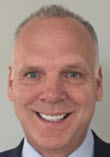




























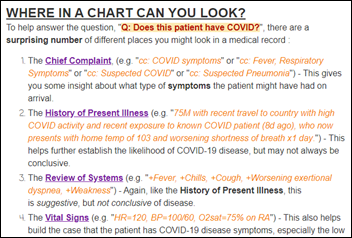















































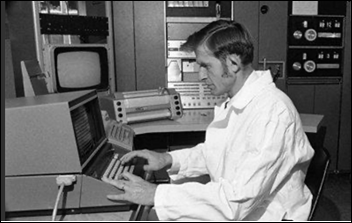




















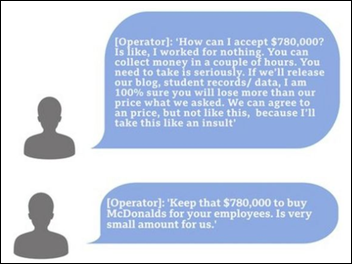














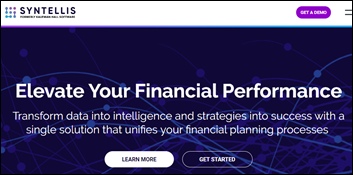













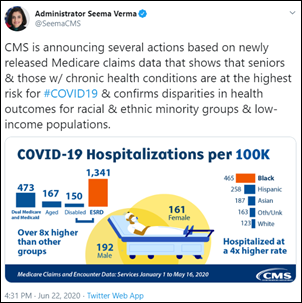

























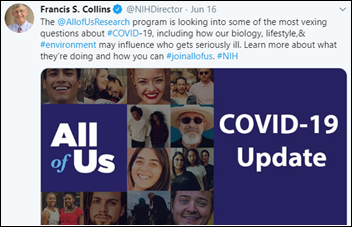






































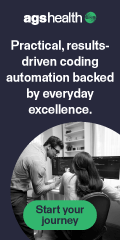


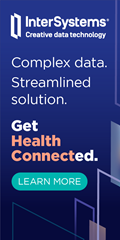
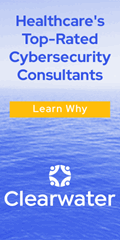

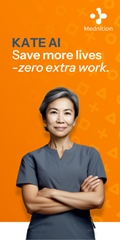

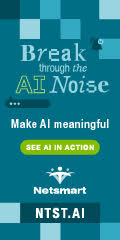

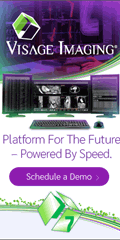
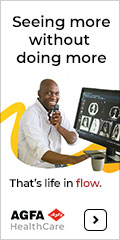
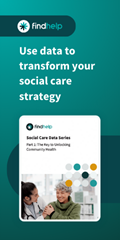



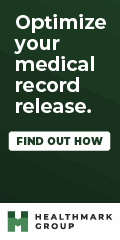

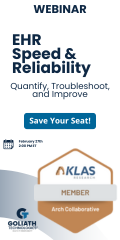
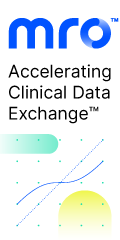

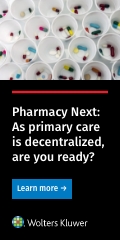
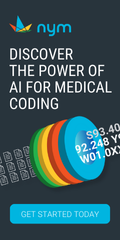
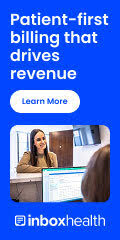
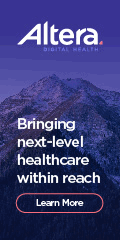

























































Would have liked to have seen more about Expanse here. Would like to see more about it on this site…